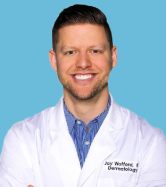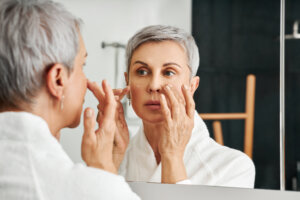Read Full Article HereDo you have annoying forehead acne? If you are way past your teen years and still can’t seem to get rid of those pesky red spots, it can be frustrating. Unfortunately, believing that acne disappears after our teen years is one of those acne myths we need to stop believing. In fact, perimenopause, menstruation, menopause, and even pregnancy can lead to an increase in the androgen hormones in our body which flare up our acne.
Plus, there are several common acne triggers beyond those hormonal changes during these periods of one’s life, and they basically all boil down to blocked skin pores (which, in turn, can happen for various reasons). “Dead skin cells also clog the pore, and other skincare products we put on the skin that are comedogenic (pore-clogging), and then oil, dead skin cells, product and acne bacteria are all in the pore. The body doesn’t like this collection of skin cells, oil, and bacteria and sends inflammatory cells (white blood cells) to the site, causing painful, pus-filled lesions — cystic acne,” board-certified dermatologist Dr. Caren Campbell told CNET.
Many people also believe that stress causes acne, but this is not exactly true, as board-certified dermatologist Dr. Jay Wofford describes in a YouTube video by U.S. Dermatology Partners. “Stress is not the root cause of acne; however, acne, like other inflammatory conditions, can be worsened by stress or worsened during times of stress,” he said.
Your hair may be to blame
We’ve already discussed that oil residue on our foreheads can block pores, which can lead to acne. This is why you need to avoid touching your face, as oil and dirt from our fingertips will transfer onto our skin. However, there is another, less obvious culprit that may be transferring oil to our foreheads –- our hair! According to the American Academy of Dermatologists, if you have oily hair, make sure to shampoo it regularly (yes, we admit it, this is one precautionary measure that has never crossed our minds, but it makes perfect sense, really!). You should also avoid products that make your hair oily.
Of course, keeping your hair away from your face also helps, so use a headband if you can. When you are jogging outdoors, you might be inclined to wear a cap, but as you sweat, the cap will keep in contact with your forehead. And, well, let’s just say it’s not the best way to keep acne at bay. The same goes for scarves or sun hats when you are enjoying a summer day at the beach. Keep your hair and accessories as far away from your forehead as possible.
How to treat forehead acne
Obviously, you can’t do much about hormonal changes (thank you, mother nature!), but if clogged pores are causing your forehead acne, then keeping your pores clean and — well, unclogged — is the first step towards better skin. Using a face wash suitable for your skin and employing the appropriate face-washing routine are crucial in removing dirt, makeup, oil residue, and other debris from your face.
Natural ingredients that help treat acne include aloe vera and tea tree oil. You can also look for products that include salicylic acid, which can help keep your pores open, and benzoyl peroxide, which acts against the bacteria that may be the cause of your acne. If the inflammation is excessive, your dermatologist might prescribe an anti-inflammatory antibiotic cream for topical use or even oral medication.
However, before visiting a doctor, you can try these things at home, as noted by the American Academy of Dermatologists. As we already said above, keeping your face clean is super important, so wash twice daily with a cleanser and wash your face after sweating, too! However, before rushing to buy a facial cleansing brush, be aware that dermatologists suggest using our fingertips, as scrubs or brushes may further aggravate acne-sensitive skin. Choose products that are alcohol-free, and stay clear from astringents, exfoliants, and toners, which typically dry your skin, thus further exacerbating your acne.
What’s Causing Your Forehead Acne?
June 16, 2024








